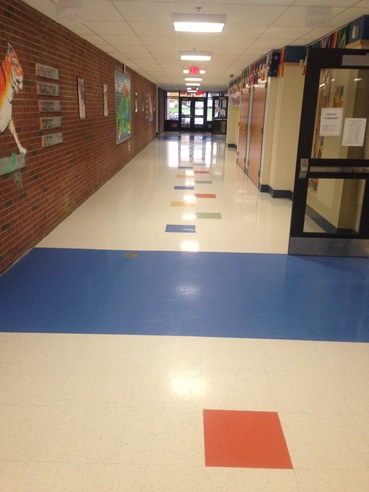Let’s review and discuss the last, ‘What Do You See Wednesday’
First, here’s the picture.

Here’s what Officer Diana Back had to say…
It is SUPER clean which shows that it is taken care of and staff care about their school. It is also well lit, nice line of vision, no real hiding spots…..door is open so people can hear/see anything unusual from inside the classroom and there seems to be a color-code scheme thing going on.
Here’s what I have to add.
First of all, outstanding job to Diana. Absolutely, the school is well taken care of and super clean. That tells us a lot about the leadership, staff, and students. It looks like they care and having spent the day in the school—I can say unequivocally that they do!
I want to add to the color-code scheme that Diana mentioned, which was really the purpose of this picture. The color coding is a CPTED (Crime Prevention Through Environmental Design) technique. It’s made to influence behavior. Along with the lights directly over the colored squares, it helps to create a ‘desire’ in the person walking down the hall to follow a particular path. After all, ask yourself if you were walking down the hall where would you choose to walk. Would it be on the colored squares and under the lights or along the sides?
I’m guessing down the middle of the hall which is good and bad.
Good, because we want to influence behaviors and guide people to walk where we want them to. This helps to control access, enhance surveillance, and give order to the space.
Bad, because it’s in the middle of the hall. When students are changing class, we don’t want 100 students walking in the center of the hall. It is better to keep people separated by space and distance which reduces conflict and the possibility of random violence.
How would we fix this?
When you build new schools or renovate existing buildings in your district, really think about each space and add in every control feature that you possibly can. In this hall, we would put the colored squares on the outside, near the walls and put a string of wall lights directly over them. That way, when the students walk down the hall they will be close to the walls and separated in two columns instead of one directly down the middle.
This will give us greater control and allow for one adult to stand in the middle and better supervise the passing students.
It may seem like a little thing, but creating safer schools is a process and everything that helps, even if only a little, will add up to make a big difference.








